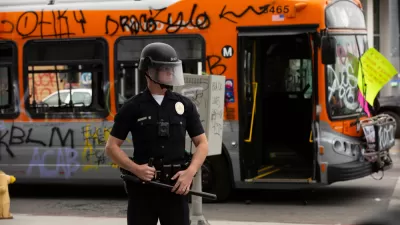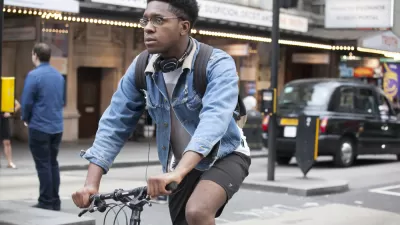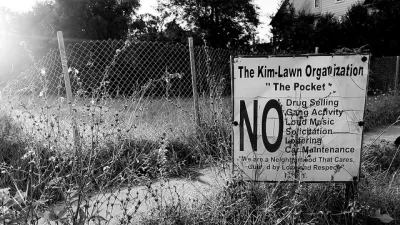Last year, Chicago experienced a surge in gun violence that drew national attention. So far this year, shootings and crime are down significantly thanks to a mix of tactics employed by city leaders. Is the drop in crime sustainable?
"A year after this city drew new attention for soaring gun violence and gang bloodshed, creating a political test for Mayor Rahm Emanuel in President Obama’s hometown, Chicago has witnessed a drop in shootings and crime," reports Monica Davey. "Killings this year have dipped to a level not seen since the early 1960s."
A surge of police officers to the city's most dangerous areas, comprehensive analysis of the city's gangs, a focus by police on more than 400 individuals deemed "most likely to be involved in a murder, as a victim or an offender," and jobs and after school programs are among the efforts credited with helping to ease the crisis.
"Leaders of the police union, who describe some of the current efforts as 'smoke and mirrors,' caution that the dismal statistics of 2012 are being used to paint a falsely upbeat picture of 2013," notes Davey, "and say they doubt such intense policing efforts are financially sustainable in any major city without expanding the force."
"In some of the most crime-ridden neighborhoods — even those where statistics suggest clear improvement — some residents say they feel as unsafe as ever, and worry that the closing this fall of the largest number of elementary schools in recent memory may force schoolchildren to venture down blocks controlled by gangs to get to new schools."
FULL STORY: Chicago Tactics Put Major Dent in Killing Trend

Planetizen Federal Action Tracker
A weekly monitor of how Trump’s orders and actions are impacting planners and planning in America.

Restaurant Patios Were a Pandemic Win — Why Were They so Hard to Keep?
Social distancing requirements and changes in travel patterns prompted cities to pilot new uses for street and sidewalk space. Then it got complicated.

Map: Where Senate Republicans Want to Sell Your Public Lands
For public land advocates, the Senate Republicans’ proposal to sell millions of acres of public land in the West is “the biggest fight of their careers.”

Maui's Vacation Rental Debate Turns Ugly
Verbal attacks, misinformation campaigns and fistfights plague a high-stakes debate to convert thousands of vacation rentals into long-term housing.

San Francisco Suspends Traffic Calming Amidst Record Deaths
Citing “a challenging fiscal landscape,” the city will cease the program on the heels of 42 traffic deaths, including 24 pedestrians.

California Homeless Arrests, Citations Spike After Ruling
An investigation reveals that anti-homeless actions increased up to 500% after Grants Pass v. Johnson — even in cities claiming no policy change.
Urban Design for Planners 1: Software Tools
This six-course series explores essential urban design concepts using open source software and equips planners with the tools they need to participate fully in the urban design process.
Planning for Universal Design
Learn the tools for implementing Universal Design in planning regulations.
Heyer Gruel & Associates PA
JM Goldson LLC
Custer County Colorado
City of Camden Redevelopment Agency
City of Astoria
Transportation Research & Education Center (TREC) at Portland State University
Camden Redevelopment Agency
City of Claremont
Municipality of Princeton (NJ)





























